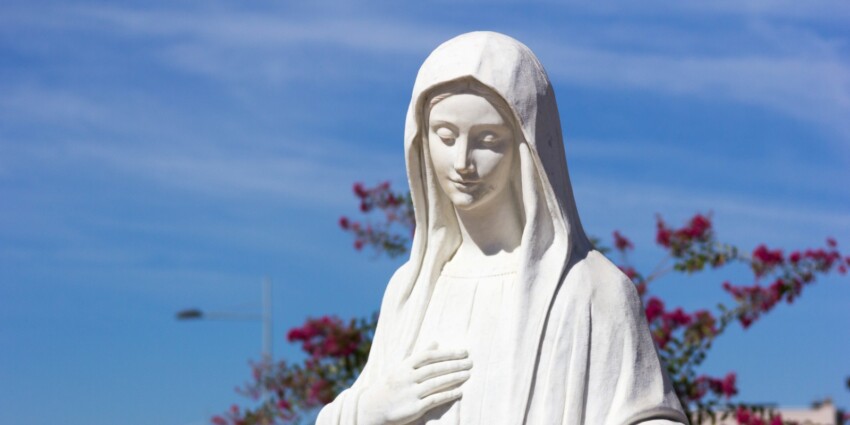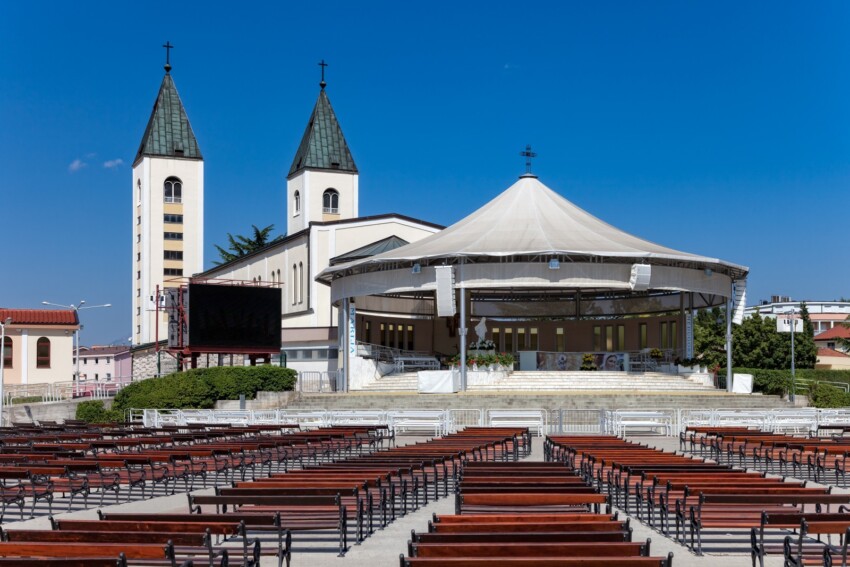

Medjugorie stands to Bosnia and Herzegovina as Fatima stands to Portugal and Lourdes to France. This tiny town not far from the border with Croatia would have remained unknown to the whole world were it not for an episode that occurred in 1981, when six local children claimed to have seen an apparition of the Blessed Virgin Mary, who presented herself to them as the Queen of Peace, and to have received a message of love and hope from her.
The apparitions followed one another for days and, a unique case in Marian apparitions, continued for 30 years without interruption: they began on a hill a few kilometres from the city centre, then moved to the visionaries’ homes and the parish house and continue to this day.
As early as 1984, Medjugorje became a place of pilgrimage. The affair created political turmoil in the early years – the communist regime resented the clamour and religious emphasis caused by the affair – but in economic terms it was a true blessing…. it has to be said!
The organisational machine was soon set in motion and Medjugorje was transformed from a tranquil town “between the mountains” (this is the meaning of the name in Croatian) into a tourist destination of international appeal, with the usual corollary of miraculous healings (real or presumed), pilgrim pensions, souvenir shops, organised tours and set menus.

Officially, the Medjugorje apparitions have not yet been approved by the Vatican, but this has not stopped a town of only 4000 inhabitants from becoming the most famous tourist attraction in Bosnia and Herzegovina after Sarajevo and Mostar Bridge.
It is a place of pilgrimage that mixes sincere religious faith and a kind of kitsch folklore, where in the course of the same day one can experience moments of touching spirituality, witness scenes of trance and/or collective hysteria, buy souvenirs of dubious taste and carve out a corner of peace atop a sacred hill.
For non-believers who have come all this way just to have a look, one to two hours is more than enough time to visit the attractions linked to the cult of Our Lady of Medjugorie. The faithful, on the other hand, should allow more time to attend the religious celebrations and gatherings and to pray in solitude.
Just one recommendation: the large gatherings in Medjugorie attract not only pious souls moved by devotion and charity, but also shady individuals who take advantage of the crowds to steal wallets, so when you raise your eyes to heaven remember to keep one hand in your pocket!
The names of the six children to whom the Queen of Peace appeared in vision, sometimes called “the visionaries” of Medjugorje, are: Marija Pavlovic Lunetti, Mirijana Dragicevic Soldo, Ivanka Ivankovic Elez, Vicka (Vida) Ivankovic, Ivan Dragicevic, Jakov Colo.
At the time of their first appearance they were between 10 and 16 years old. Today they live scattered between Bosnia-Herzegovina, Italy and the United States; none of them have taken vows, almost all are married with children.

The town of Medjugorje itself is insignificant: the only three attractions in the town are the places of worship related to the apparitions of the Queen of Peace.
The Church of St James is the epicentre of religious services in Medjugorje and the ideal starting point for a visit to the places of worship. It is easily reached from the city centre by walking down the main street.
Built in 1969, it is a somewhat anonymous, modern church with no decoration on the façade, which would never have attracted so much attention were it not for its symbolic significance. Only the two tall bell towers with clock give it an air of grandeur.
It must be said that it is a functional church, which is well suited to receive a very large number of worshippers on a daily basis who want to go to confession or attend religious celebrations. It has an open-air arena with 5,000 seats used for religious celebrations in the summer months.
From the church, a road decorated on the sides with mosaics depicting the Luminous Mysteries leads to an imposing 5-metre-high bronze statue depicting Christ crucified without the cross. This is Ajdo Ajdic’s Risen Saviour, made in 1998.
The Apparition Hill (Podbrdo) is exactly what its name implies, namely the hill about 2 km from the town centre where Our Lady of Medjugorje first appeared to the young visionaries.
A white statue of Our Lady marks the exact spot of the 1981 apparitions. It can be reached in just 20 minutes from the car park if you limit yourself to walking, but if you want time for contemplation and prayer calculate at least an hour.
The path leading directly to the statue is marked by sculptures representing the Joyful Mysteries of the Holy Rosary; you can continue along a loop with the Sorrowful Mysteries leading to the top of the hill.
The ascent is along a path of angular rocks: despite the terrain, which is not at all easy, the most fervent believers tackle it barefoot to perform an act of penance. Bare feet are not necessary, but some care is required as the rocks can be slippery (especially after rain).
The other hill in Medjugorje that has become a popular place of worship is the 520 metre high Mountain of the Cross (Križevac or Šipovac Mountain).
The gigantic cross at its summit, 8.5 metres high and 3m wide, was erected in 1933 to commemorate the 1900th anniversary of Christ’s crucifixion, so the mountain became a place of devotion some 50 years before the apparitions that made Medjugorje world famous. The pole of the cross contains relics of Christ received from Rome.
The climb to the top of the Mountain of the Cross is much more strenuous than that to the Hill of Apparitions; however, it is shadier. On arrival you will be rewarded with a splendid panorama: on a clear day the view can extend as far as the Croatian town of Vrgorac.
The path is a way of the cross with 14 stations of the cross plus a 15th at the top representing the resurrection.

If you have come to Medjugorje driven more by curiosity than by faith and do not wish to stop for religious celebrations, you can take advantage of coming here to take a look at the other attractions in the area.
Just 16 km from the places of worship in Medjugorje are the Kravice waterfalls, a cool and relaxing place somewhat reminiscent of the famous Plitvice waterfalls in Croatia, albeit in a smaller format.
Also easily accessible from Medjugorje is Mostar, the capital of Herzegovina, where you can admire the famous stone bridge over the Neretva River built by Ottoman Suleiman the Magnificent in the 16th century. Destroyed during the inter-ethnic clashes of the war in former Yugoslavia, it became its sad symbol. Its perfect reconstruction has the value of a monument to life reborn.
Between Medjugorje and Mostar, you can stop in Blagaj, a quaint village famous for its Tekija dervish monastery.

A typical day for a religious tourist in Medjugorje includes the Eucharist (it is celebrated in several languages at different times depending on the language), a visit to one or both of the holy hills and the evening collective gathering of pilgrims.
There are also weekly thematic meetings, including a collective prayer on Apparition Hill, and annual meetings on religious holidays.
Non-believers who come to Medjugorje out of curiosity can visit the three places of worship in half a day and then move on to Kravice, Mostar or other nearby attractions.
In the evening, there is little to do in Medjugorje other than dine.
One would think that in Medjugorje there is more accommodation for tourists than houses. This small town is now equipped to continually receive a very high number of visitors: the total number of beds is truly impressive, over 17 thousand divided between budget hotels, guesthouses, flats, 3-star hotels and even a couple of luxury hotels.
All the facilities are located in the centre or within a radius of a few kilometres.
If you are already in Croatia, and in particular if you are in a location on the southern coast, getting to Medjugorje by car is very easy: you can take the E65 from Split or the D8 from Dubrovnik and reach your destination in less than two hours in the former and about two and a half hours in the latter.
There are no airports in Medjugorje: the nearest airport served by low-cost flights is Dubrovnik airport.
Another possibility is to join a one-day tour from Dubrovnik or Split or join one of the many group trips organised by agencies specialising in religious tourism.